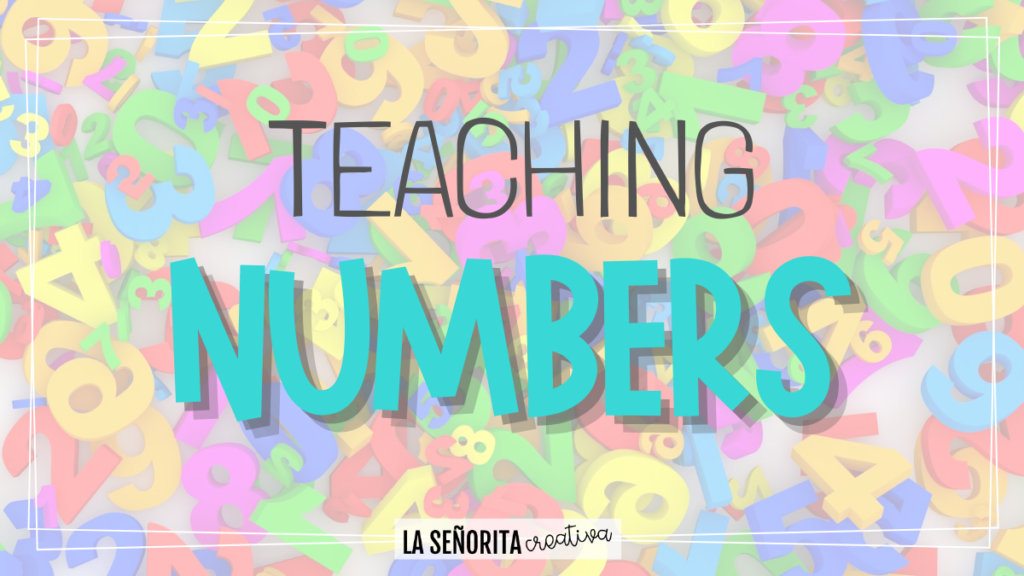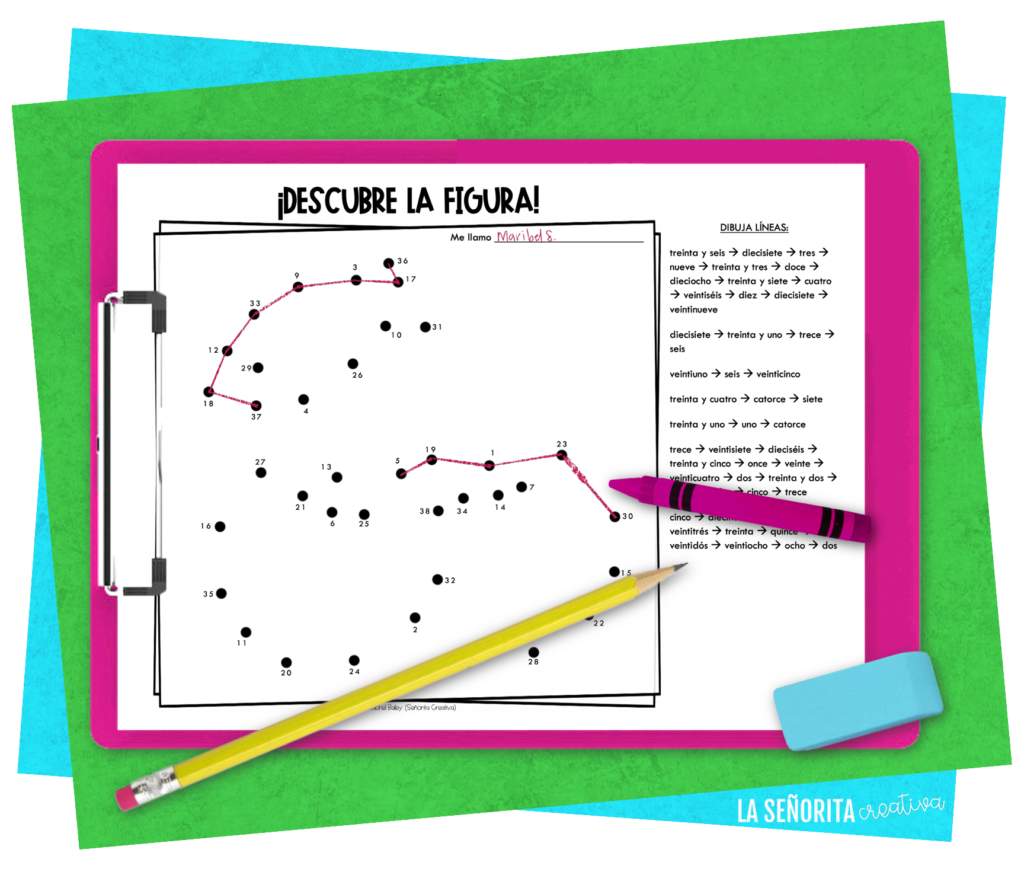
Learning numbers is something that almost every curriculum teaches at the beginning of the year, and knowing numbers in the target language is so important for basic tasks, like sharing phone numbers, talking about prices, and more. As important as it is, numbers can be a very dry topic to learn. I mean, there’s only so many times you can count to 10…
My first year of teaching, I just kinda “taught” numbers (if you know what I mean…), and my students could count really well, but they had a hard time with their numbers out of order. I spent a lot of time that summer trying to find a better way to teach numbers, and I wanted to share my top five strategies for teaching and reviewing numbers.
License Plates
This is one of my favorite ways to practice and review numbers (along with letters) while keeping it authentic. I Google Image searched “placa” and “matrícula” and saved my favorite license plates. I’ve used these images a few different ways with my students. Some days, I would post a few on the whiteboard as a warmup (or time-filler). To work on speaking, paired my students up (check out this post for easy ways to group students) and gave one person in each group a set of 5-10 printed license plates and a second set to the other person in the group. They take turns reading out the license plates to their partner. I usually set up the context as they were a witness to a car accident, or they were playing the license plate game and trying to spot as many plates as they could on their road trip, anything authentic and engaging for my students.
Puzzles

I love using puzzles in my class, and most of my students enjoy puzzles so much more than a “regular” worksheet. Puzzles are a great activity to leave when I know I’ll have a sub because they’re easy to manage for the sub and students generally stay more engaged when compared to a “regular” worksheet or something similar. While I use many types of puzzles in my classroom, connect-the-dot puzzles lend themselves really well to practicing numbers. The trick to making these work is to renumber them so they aren’t connecting the numbers from smallest to largest, but in the order that you determine. In addition to using these as a sub activity to practice reading comprehension, I’ve also used them as listening practice by reading off the numbers in order.
Quack Game
I learned this fun game as a team-building activity for one of the clubs I sponsored, I’ve also heard it called the “Buzz Game”. Pick a single digit number and announce it to the class or small group. For this example, I’m going to use the number “five”, but you can choose whichever number you want. Students go around the room (or around their group) saying the numbers in order in the target language, starting at one (or zero). Every time they get to a number containing the number five or a multiple of five, they clap (or say “cuac”) instead of the number. If the student says the number instead (or says the wrong number), they are out.
When I play with my students, I don’t usually have anyone be “out” to keep participation and engagement high. I know it sounds like an easy game, but it is deceptively tricky! My kids love to play this game, and it’s a great way to fill extra time at the end of class or on a shortened day.
Boom Cards

BOOM! Cards are such a fun tool for the language classroom, and they have really taken off during distance learning. They can be completed on tablets, phones, and computers. I love using BOOM! Cards in my classroom because it gives students instant feedback and lots of practice as they can play the sets over and over. I made this fun set to practice numbers in three different ways: choosing the biggest (or smallest) number, completing a number pattern, and dragging and dropping the correct mathematical symbol (as seen in the example above).
Are you interested in learning more about BOOM! Cards? I have a blog post in the works about how to set up an account and use them with your students, so check back to read more.
Phone Numbers
Another real-world application of number words is with phone numbers. Many students don’t feel comfortable giving out their phone numbers, so I would make up numbers for them or use one of my info gap activities (this one practices names, phone numbers, and countries of origin). This is also a great way to practice question words and simple conversations, depending on the amount of information you have students share.
How do you practice numbers? Leave your suggestions in the comments below!


